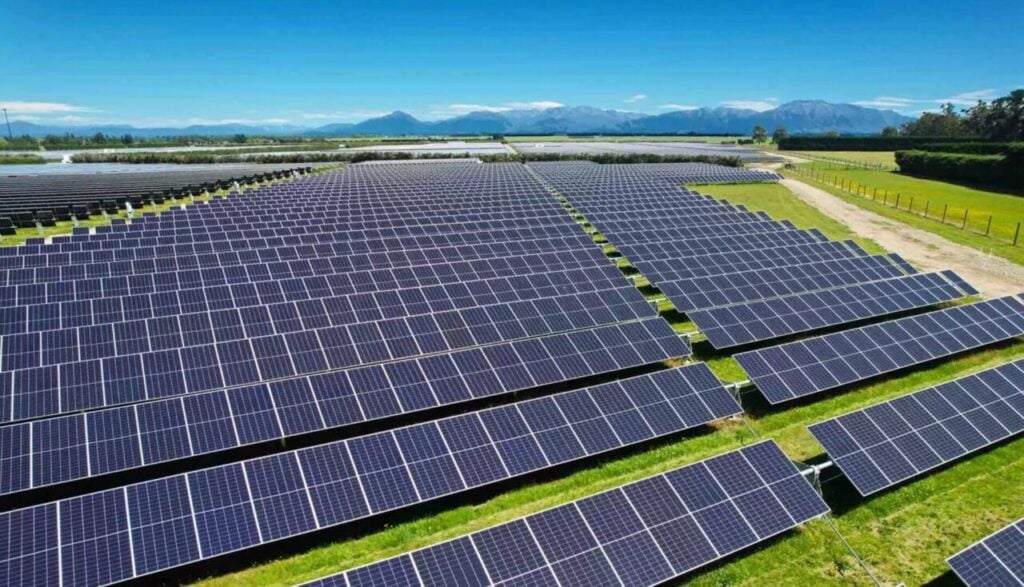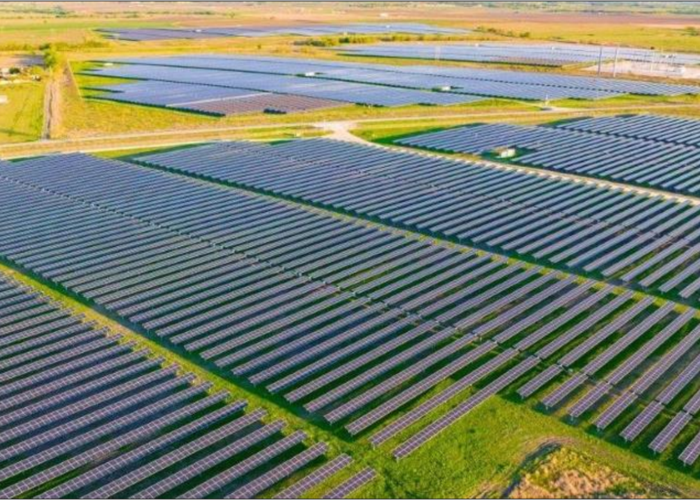
New Zealand power company Genesis Energy has officially opened the 63MWp Lauriston site, which it claims is the country’s largest solar PV power plant.
The site, featuring over 90,000 solar PV modules spread across a 93-hectare site, is located west of Christchurch on New Zealand’s South Island, near the Rakaia River in the Canterbury Plains area.
Try Premium for just $1
- Full premium access for the first month at only $1
- Converts to an annual rate after 30 days unless cancelled
- Cancel anytime during the trial period
Premium Benefits
- Expert industry analysis and interviews
- Digital access to PV Tech Power journal
- Exclusive event discounts
Or get the full Premium subscription right away
Or continue reading this article for free
It sits upon land traditionally used for agricultural purposes, specifically sheep grazing. Genesis confirmed that these agricultural practices will continue on the site in what is known as ‘agrivoltaics’ or ‘agriPV’.
The solar PV plant was developed via a joint venture (JV) between Genesis and FRV Australia. FRV Australia expanded its operations to encompass New Zealand in 2021 via the JV, eyeing a 500MW pipeline of solar PV projects.
The Laurison power plant was inaugurated at a ceremony on 29 April with the minister for the South Island and MP for Rangitata, James Meager, iwi representatives, Ashburton mayor Neil Brown, EA Networks chief executive Onno Mulder, and members from Genesis, FRV Australia, and construction company Beon, all in attendance.
Genesis chief executive Malcolm Johns said the opening of the solar PV power plant was an important milestone in delivering on the company’s long-term strategy.
“For New Zealand to reach net zero by 2050, the country’s energy must become 60% electric, 95% renewable and available 100% of the time. Solar has a clear role to play in this transition, and we’re committed to expanding this area of our business,” Johns said.
As reported by PV Tech in May 2024, telecommunications company Spark New Zealand penned a PPA for the Lauriston solar PV plant. The project will fulfill around 60% of Spark’s electricity demand and will form the basis of other potential collaborations on projects to enable the company to reach 100% renewable energy use.
Johns added that the development of the Lauriston solar plant provided knowledge now being deployed to other Genesis solar projects in Leeston (67MW), Edgecumbe (127MW) and Foxton (200MW).
“We expect our Leeston site, also in Canterbury, to get the green light in late 2026 and start generating in 2027. We’re excited to apply what we’ve learned from the Lauriston project to Leeston, increasing our contribution to New Zealand’s renewable generation.”
Opportunities for solar PV and energy storage in New Zealand
Due to New Zealand’s reliance on hydroelectric power plants, most of which are situated on the country’s southern island, dry years can lead to fluctuations in energy supply. Last year, this caused an energy crisis, with wholesale electricity prices spiking as the country became more reliant on oil and gas.
The turbulence last year now presents an opportunity for solar PV, wind and energy storage to secure a more prominent role in the island nation’s electricity mix, something Sarah Gillies, chief executive of the Electricity Authority, spoke with PV Tech Premium about last year.
Gillies told PV Tech Premium that more investment is needed to support and stabilise New Zealand’s electricity system, and the next 12-24 months will “continue to be challenging.”
“We need more investment in generation and to harness opportunities from new technologies and demand response to keep the lights on at an affordable price. Looking ahead, we continue to need a combination of fuels and the supply,” Gillies said.






